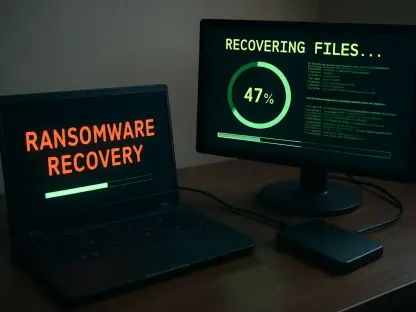Definition and Purpose of This Guide
This guide aims to equip businesses with actionable strategies to secure cloud workloads at scale, addressing the urgent need to protect expansive digital environments while maintaining operational agility. It offers a clear roadmap for mitigating risks tied to cloud adoption, such as data breaches and compliance challenges, ensuring that organizations can balance robust security with innovation. By following the outlined steps, businesses will learn how to safeguard their cloud infrastructure effectively.
The importance of this guide lies in the rapid shift toward cloud technologies across industries, where the complexity of multi-cloud environments demands urgent and tailored security measures. It draws on expert insights to provide practical solutions that can be implemented without hindering productivity. This resource is designed to help companies stay competitive and compliant in an increasingly digital landscape.
Beyond general advice, this guide serves as a bridge to deeper learning through a valuable free webinar by CyberArk experts. It focuses on real-world applications, ensuring that businesses can apply these strategies to diverse cloud platforms while addressing unique vulnerabilities. The ultimate goal is to empower organizations to protect their assets and maintain trust in a threat-laden environment.
The Growing Need for Cloud Security in a Digital Era
The digital transformation sweeping through industries has seen businesses adopt cloud technologies at an unprecedented rate, with over 90% of enterprises now relying on cloud services to enhance speed and customer service. This shift, while a competitive necessity, exposes organizations to significant risks if not secured properly. Cloud workloads, often sprawling across multiple platforms, have become prime targets for cyber attackers seeking to exploit vulnerabilities in access control.
Managing access in such expansive environments presents a formidable challenge, as misconfigurations or weak policies can lead to devastating data breaches. The consequences extend beyond financial loss, encompassing legal penalties and severe reputational damage that can erode customer trust. As cloud adoption continues to grow, the stakes for securing these systems have never been higher, pushing businesses to prioritize robust defenses.
To address these concerns, key strategies must be implemented to secure cloud infrastructure at scale without stifling innovation. This balance is critical for maintaining agility in fast-paced markets while protecting sensitive data. For deeper insights, a free webinar by CyberArk experts offers valuable guidance on navigating these challenges, providing businesses with practical tools to strengthen their security posture.
Why Cloud Security Challenges Demand Urgent Attention
The rapid embrace of cloud technologies across sectors like tech, healthcare, and finance has transformed operational models, enabling scalability and efficiency. However, this widespread adoption introduces complexities in securing multi-cloud environments, where each platform may have distinct configurations and inherent vulnerabilities. These differences create gaps that cyber attackers are quick to exploit, making uniform security a daunting task.
A significant risk arises from weaknesses in identity and access management, which remain a primary entry point for malicious actors. As attackers grow more sophisticated, targeting stolen credentials or misconfigured permissions, businesses face escalating threats that can compromise entire systems in moments. This reality underscores the urgency of implementing stringent controls to protect cloud workloads from unauthorized access.
Compounding the issue is the challenge of complying with diverse regional regulations across areas like the US, UK, EU, and APAC. Each jurisdiction imposes unique requirements, adding layers of complexity to cloud security efforts. Failing to meet these standards can result in hefty fines and loss of credibility, reinforcing the non-negotiable need for comprehensive security measures to safeguard operations globally.
Practical Strategies to Secure Cloud Workloads Effectively
Securing cloud infrastructure at scale requires a structured approach that mitigates risks while preserving the agility businesses need to innovate. Drawing from expert insights shared in a CyberArk webinar titled “Securing Cloud Workloads and Infrastructure: Balancing Innovation with Identity and Access Control,” the following steps provide an actionable framework. These strategies are designed to address common vulnerabilities and ensure robust protection across diverse cloud environments.
The focus here is on practical implementation, ensuring that security measures do not become a bottleneck for teams. By adopting these methods, organizations can protect sensitive data and maintain compliance without sacrificing efficiency. Each step is crafted to tackle specific challenges, offering a clear path forward for businesses navigating the complexities of cloud security.
Step 1: Limit Damage from Stolen Credentials
Stolen credentials remain one of the most common entry points for cyber attackers, making it essential to minimize their impact. Implementing controls to restrict access and verify identities can significantly reduce the risk of breaches. This step focuses on proactive measures that limit exposure even if credentials are compromised.
Implementing Least Privilege Access
Adopting a least privilege access model ensures that users and systems are granted only the permissions necessary for their roles. This approach minimizes the attack surface by preventing over-privileged accounts from accessing sensitive areas unnecessarily. Regular reviews of access rights are crucial to maintain this principle across dynamic cloud environments.
Deploying Multi-Factor Authentication
Adding multi-factor authentication (MFA) introduces an additional layer of verification, requiring users to provide multiple forms of identification before gaining access. Even if a password is stolen, MFA can block unauthorized entry, protecting critical workloads. Businesses should prioritize widespread adoption of this method to fortify their defenses against credential theft.
Step 2: Establish Strong Access Policies Without Hindering Workflow
Creating access control policies that secure data while allowing seamless operations is a delicate balance. Policies must be robust enough to prevent breaches but flexible enough to avoid slowing down teams. This step focuses on designing frameworks that support both security and productivity in cloud systems.
Automating Policy Enforcement
Leveraging automation tools to enforce access policies ensures consistency and reduces the risk of human error. These tools can dynamically apply rules across platforms, adapting to changes in real-time without requiring manual intervention. Such efficiency is vital for maintaining security in large-scale, multi-cloud setups.
Customizing Policies for Multi-Cloud Environments
Given the diversity of cloud platforms, policies must be tailored to account for unique configurations and requirements. Customizing rules for each environment ensures comprehensive coverage without creating unnecessary restrictions. This targeted approach helps address specific vulnerabilities while supporting operational needs across different systems.
Step 3: Ensure Compliance with Global Security Standards
Meeting regulatory requirements across various regions is a critical component of cloud security, as non-compliance can lead to severe penalties. Businesses must align their practices with global standards to maintain trust and avoid legal repercussions. This step emphasizes systematic efforts to stay within legal boundaries.
Mapping Regulations to Cloud Operations
Aligning cloud security practices with regional laws in areas like the US, UK, and EU requires a detailed understanding of applicable regulations. Mapping these rules to specific operations helps identify gaps and implement necessary controls. This proactive alignment ensures that businesses remain compliant while operating globally.
Regular Audits for Compliance Assurance
Conducting periodic audits is essential to verify adherence to regulations and uncover potential issues before they escalate. These reviews provide a clear picture of compliance status, enabling organizations to address deficiencies promptly. Consistent auditing fosters a culture of accountability and strengthens overall security posture.
Step 4: Learn from Industry Leaders Like the Financial Sector
Industries such as finance, which operate under stringent security demands, offer valuable lessons for balancing protection with flexibility. Their approaches can inform strategies for other sectors facing similar challenges. This step explores how to adapt proven methods to enhance cloud security.
Adopting Risk-Based Security Models
A risk-based security model prioritizes high-impact areas, allocating resources where threats are most severe. This focused approach optimizes efforts, ensuring that critical assets receive the strongest defenses. Businesses can benefit from assessing risks continuously to adapt to evolving threats effectively.
Leveraging Real-World Case Studies
Studying real-world examples from high-stakes environments provides actionable insights into successful security practices. Case studies from the financial sector highlight how to implement controls without compromising efficiency. Learning from these experiences helps organizations refine their strategies for maximum impact.
Key Takeaways for Securing Cloud Infrastructure
Securing cloud workloads at scale demands a combination of proactive measures and strategic planning. The essential strategies include limiting damage from stolen credentials through least privilege access and multi-factor authentication. Establishing strong access policies ensures data protection without impeding team workflows, while automation and customization address multi-cloud complexities.
Compliance with global security standards remains a priority, achieved through regulatory mapping and regular audits. Drawing inspiration from industries like finance offers a blueprint for balancing security with operational needs. For deeper guidance, the CyberArk webinar serves as an invaluable resource, providing practical solutions from seasoned experts to fortify cloud defenses.
Cloud Security in the Broader Business Landscape
The trend of cloud adoption is undeniable, as businesses across sectors like tech and finance integrate these technologies into their core operations. This shift, while beneficial, aligns with the increasing sophistication of cyber threats, necessitating advanced security measures. Protecting cloud workloads is not just a technical requirement but a strategic imperative for maintaining competitiveness.
These security strategies apply universally, though challenges vary by industry due to differing regulatory and operational demands. Evolving threats and changing compliance landscapes pose ongoing hurdles that require adaptive solutions. Staying ahead means continuously refining approaches to address new risks as they emerge in dynamic digital environments.
Looking ahead, advancements in automation and AI-driven security tools hold promise for enhancing cloud protection. These innovations can streamline threat detection and response, further supporting the balance between security and innovation. Businesses that embrace such developments position themselves to navigate future challenges with greater resilience and efficiency.
Take Action to Protect Your Cloud Environment
Reflecting on the journey through securing cloud workloads, it is clear that businesses face significant challenges in safeguarding expansive digital infrastructures while maintaining efficiency. The steps taken, from limiting credential damage to ensuring compliance, provide a robust framework for protection. These efforts underscore the importance of proactive measures in a landscape rife with cyber threats.
Moving forward, organizations are encouraged to delve deeper into expert resources, such as the free CyberArk webinar hosted by specialists Przemek Dybowski and Josh Kirkwood. This platform offers nuanced insights and tailored solutions to bolster cloud defenses. Engaging with such opportunities is a critical next step for those aiming to refine their security posture.
Ultimately, the path to resilience is paved with actionable initiatives that businesses adopt to shield their cloud environments. Taking immediate steps to implement these strategies ensures not only safety and compliance but also a competitive edge in a digital era. The focus remains on continuous improvement, adapting to emerging risks with informed and decisive action.









